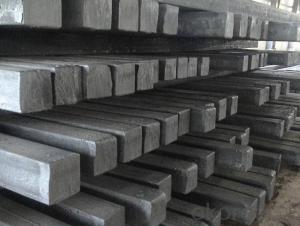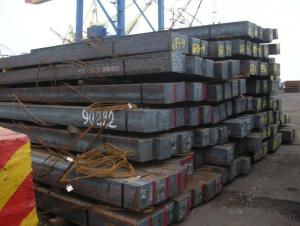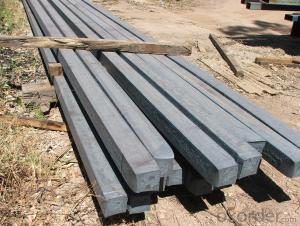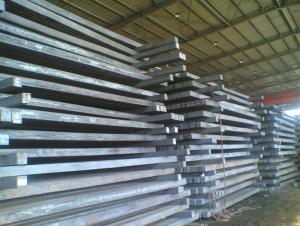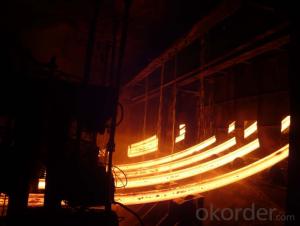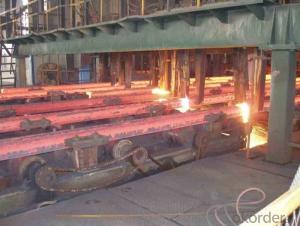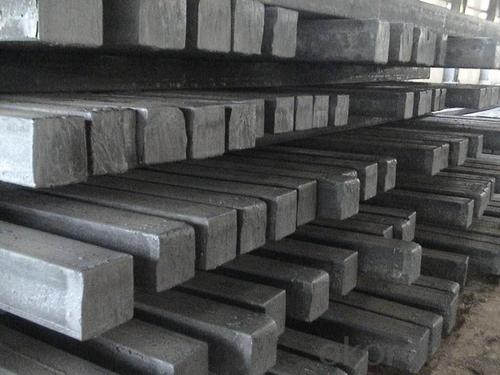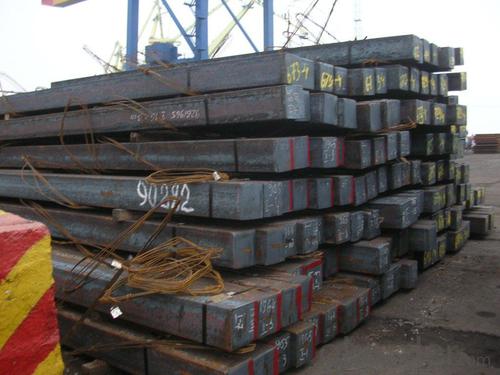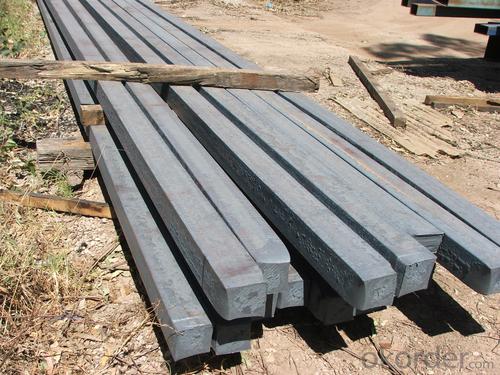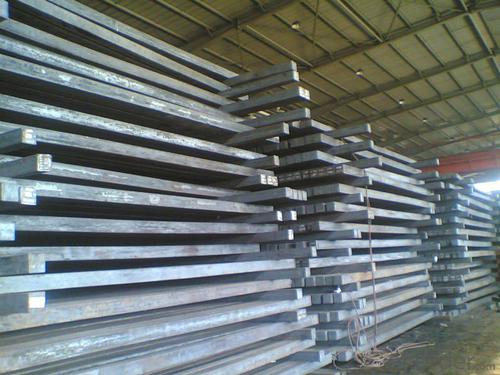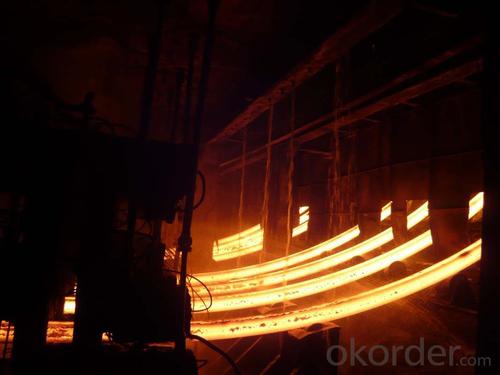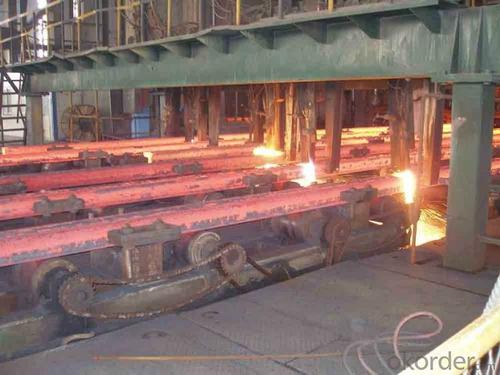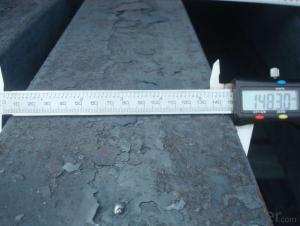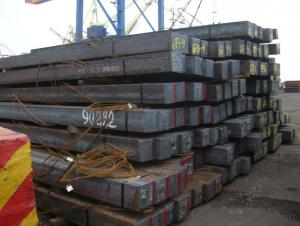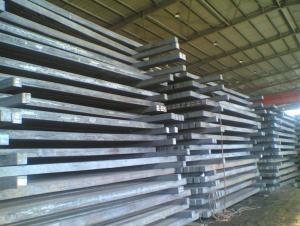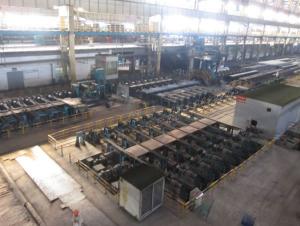Hot Rolled Square Steel Billet 3SP Standard 190mm
- Loading Port:
- Shanghai
- Payment Terms:
- TT OR LC
- Min Order Qty:
- 2000 m.t.
- Supply Capability:
- 10000 m.t./month
OKorder Service Pledge
OKorder Financial Service
You Might Also Like
Structure of Hot Rolled Square Steel Billet 3SP Standard 190mm
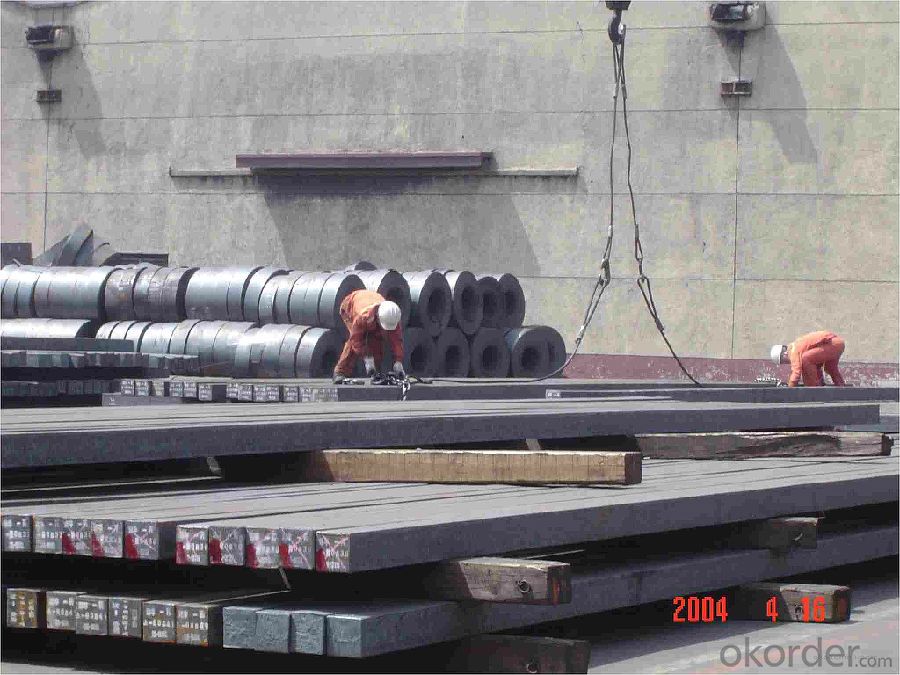
Description of Hot Rolled Square Steel Billet 3SP Standard 190mm
PPGI is made by cold rolled steel sheet and galvanized steel sheets as baseplate, through the surface pretreatment (degreasing, cleaning, chemical conversion processing), coated by the method of continuous coatings (roller coating method),
and after roasting and cooling. Zinc coating: Z60, Z80, Z100, Z120, Z180, Z275, G30, G60, G90
Alu-zinc coating: AZ60, AZ80, AZ100, AZ120, AZ180, G30, G60, G90
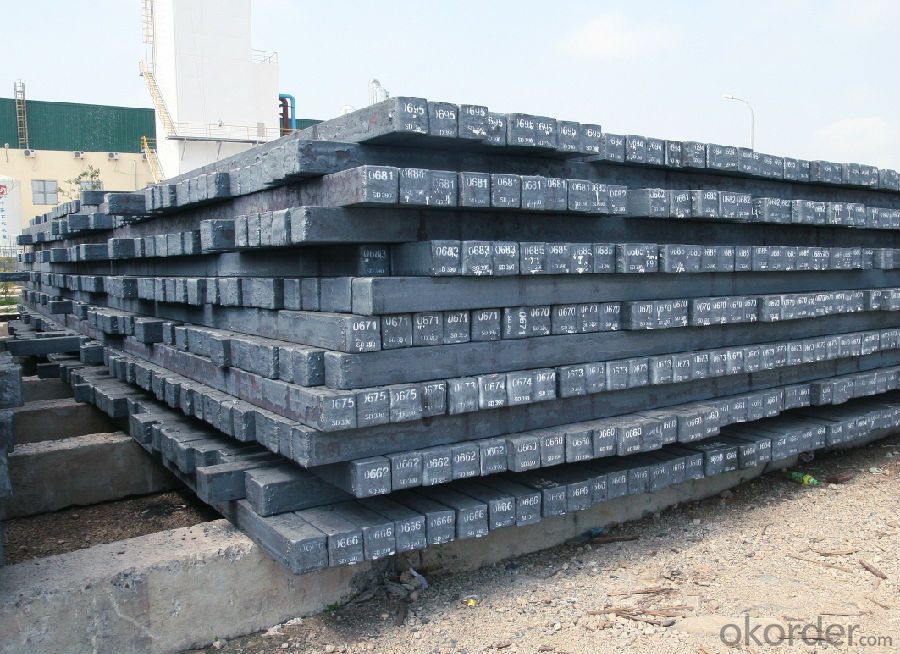
Main Feature of Hot Rolled Square Steel Billet 3SP Standard 190mm
1) Excellent corrosion resistance: The zinc layer provides a good protection of Pre-painted Galvanizeed Steel Sheet.
2) High heat resistance: The reflective surface of the material aids in efficiently reflecting the sunlight away and in turn reducing the amount of heat transmitted. The thermal reflectivity converts into energy savings.
3) Aesthetics: Pre-Painted Galvanized steel sheet is available in plethora of patterns and multiple sizes as per the requirements that given by our customers.
4) Versatility: can be used in the various areas.Standard seaworthy export packing: 3 layers of packing, inside is kraft paper, water plastic film is in the middle and outside GI steel sheet to be covered by steel strips with lock, with inner coil sleeve.
Applications of Hot Rolled Square Steel Billet 3SP Standard 190mm
1) Automotive bodies: filters, fuel tanks, etc.
2) Construction materials: roofings, welding pipes,
3) Electric and electronic appliances: computer cans, etc.
4) Steel cans: containers, etc.
5) Steel furniture: washing machines, refrigerators, microwaves, etc.
6) Drums
7) Office equipment: printer, recorders, etc.
8) Motors and transformers
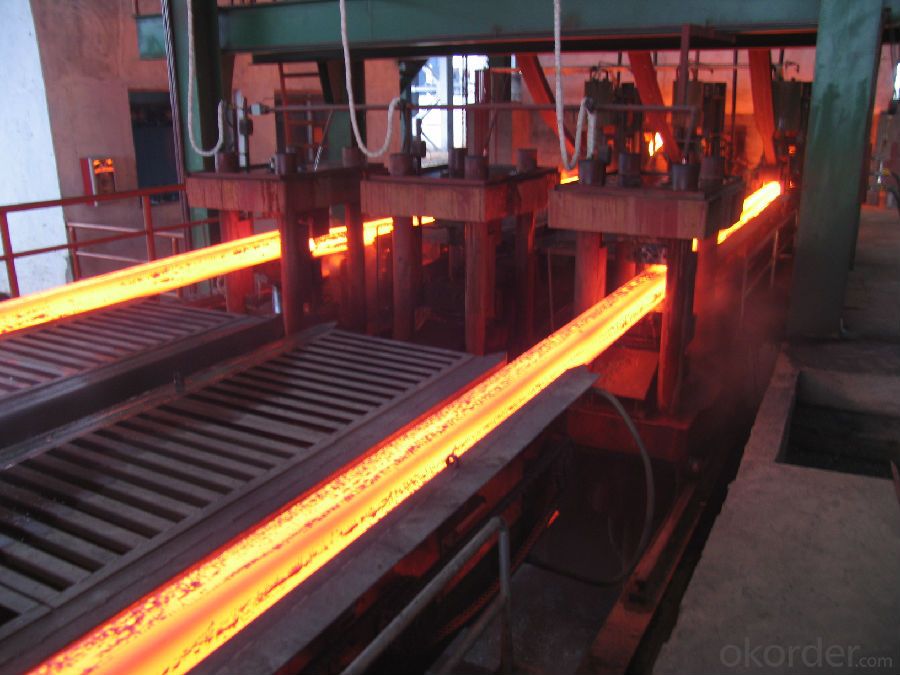
Specifications of Hot Rolled Square Steel Billet 3SP Standard 190mm
| Classified symbol | Yield Point Minimum N/mm2 | Tensile Strength Minimum | Elongation Minimum % | Application | ||||
| N/mm2 | Nominal Thickness mm (t) | |||||||
| JIS | Yogic | 0.25-0.4 | 0.4-0.6 | 0.6-1.0 | 1.0-1.6 | |||
| G3312 | specification | |||||||
| CGCC | CGCC | -205 | -270 | -20 | -21 | -24 | -24 | Commercial |
| CGCD | CGCD | --- | 270 | --- | 27 | 31 | 32 | Drawing |
| --- | CG340 | 245 | 340 | 20 | 20 | 20 | 20 | Structural |
| CGC400 | CG400 | 295 | 400 | 16 | 17 | 18 | 18 | Structural |
| CGC440 | CG440 | 335 | 440 | 14 | 15 | 16 | 18 | Structural |
| CGC490 | CG490 | 365 | 490 | 12 | 13 | 14 | 16 | Structural |
| CGC570 | CG570 | 560 | 570 | --- | --- | --- | --- | Structural |
| ASTM Designation | Yield Point Minimum | Tensile Strength Minimum | Elongation Minimum % | Application | Q/BQB 445-2004(China standard) | ASM A653/A653M | JISG 3312 | |
| ksi(MPa) | ksi(MPa) | TDC51D+Z | (CS TYPE A+Z) | CGCC | ||||
| A653(M)-99 CS TYPE A,B,C | --- | --- | --- | Commercial | TDC52D+Z | CGCD | ||
| A653(M)-99 FS | --- | --- | --- | Lock Forming | TS250GD+Z | (G250+Z) | - | |
| A653(M)-99 DS | --- | --- | --- | Drawing | TS300GS+Z | (G300+Z) | CGC 400 | |
| A653(M)-99 SS Grade33(230) | 33(230) | 45(310) | 20 | Structural | TS350GD+Z | (G350+Z) | CGC490 | |
| A653(M)-99 SS Grade37(255) | 37(255) | 52(360) | 18 | Structural | TS550GD+Z | (G550+Z) | CGC570 | |
| A653(M)-99 SS Grade40(275) | 40(275) | 55(380) | 16 | Structural | ||||
| A653(M)-99 SS Grade50(345) | 50(345) | 65(450) | 12 | Structural | ||||
| A653(M)-99 SS Grade80(550) | 80(550) | 82(570) | --- | Structural | ||||
FAQ of Hot Rolled Square Steel Billet 3SP Standard 190mm
We have organized several common questions for our clients,may help you sincerely:
1. How Can I Visit There?
Our company is located in Tianjin City, China, near Beijing. You can fly to Tianjin Airport Directly. All our clients, from home or aboard, are warmly welcome to visit us!
2. How Can I Get Some Sample?
We are honored to offer you sample.
3. Why choose CNBM?
1, ISO, BV, CE, SGS approved.
2, Competitive price and quality.
3, Efficient service team online for 24 hours.
4, Smooth production ability(50000tons/month) .
5, quick delivery and standard exporting package.
6, Flexible payment with T/T, L/C, Paypal, Kunlun bank, etc.
- Q: How are steel billets used in the manufacturing of gears?
- Gears, which are mechanical devices that transmit power and motion, rely heavily on steel billets for their production. These billets, obtained through casting or rolling, are semi-finished steel products that serve as the foundation for gear manufacturing. To begin the process, the steel billets are heated to a specific temperature and then subjected to mechanical force, such as hammering or pressing, to shape them into the desired gear form. Once the initial shape is achieved, the billets undergo various machining operations, including milling, drilling, and grinding, to remove excess material and create precise dimensions and features. Steel billets offer numerous advantages in gear manufacturing. Their durability and strength allow them to handle heavy loads and high-speed rotations, while their excellent wear resistance ensures long-lasting performance. Additionally, steel billets can be easily machined to achieve intricate gear designs, enabling customization and optimization of gear performance. In conclusion, steel billets are indispensable in gear manufacturing as they provide the necessary strength, durability, and precision for gears to function effectively. Through forging and machining processes, these billets are transformed into gears capable of efficiently transmitting power and motion.
- Q: What is the role of steel billets in the construction of stadiums and arenas?
- Steel billets play a crucial role in the construction of stadiums and arenas. These billets, which are essentially semi-finished steel products, serve as the raw material for various structural components used in the construction process. One of the primary applications of steel billets in stadium and arena construction is for the fabrication of steel beams and columns. These structural elements provide the necessary support and stability to the overall structure. Steel billets are first heated and then passed through rolling mills to acquire the desired shape and size required for these beams and columns. Moreover, steel billets are also used in the production of steel reinforcing bars, commonly known as rebars. These rebars are used to reinforce the concrete structures within stadiums and arenas, such as foundations, walls, and floors. The combination of steel and concrete enhances the structural integrity and load-bearing capacity of these structures, making them capable of withstanding heavy loads, vibrations, and external forces. Additionally, steel billets are utilized in the construction of roof trusses and frames, which provide support for the stadium or arena's roofing system. These steel components offer the necessary strength and durability to withstand the weight of the roof, while also ensuring the overall stability of the structure. Furthermore, steel billets are employed in the production of seating structures, staircases, handrails, and other architectural elements within stadiums and arenas. These components not only contribute to the overall aesthetics of the venue but also provide safety and comfort to spectators. In summary, steel billets are indispensable in the construction of stadiums and arenas. They are transformed into various structural and architectural components that provide strength, stability, and durability to the overall structure. By utilizing steel billets, stadiums and arenas can be built to withstand the demands of large crowds, harsh weather conditions, and the test of time.
- Q: How do steel billets differ from steel ingots?
- Steel billets and steel ingots are both intermediate forms of steel that are produced during the steel manufacturing process. However, there are some key differences between them. Firstly, the shape and size of steel billets and steel ingots differ. Steel billets are typically square or rectangular in shape, with a cross-sectional area of around 36 square inches. They are long and slender, usually measuring around 6 to 12 inches in width and 1 to 12 feet in length. On the other hand, steel ingots are generally larger and more irregular in shape. They can be cylindrical, rectangular, or even a combination of shapes, depending on the production method used. Steel ingots are usually much larger than billets, with a typical weight ranging from several tons to over 100 tons. Secondly, the production process for steel billets and steel ingots also differs. Steel billets are usually created through continuous casting, where molten steel is poured into a mold and then cooled and solidified to form a billet. This process allows for a more controlled and uniform shape, size, and composition of the billet. Steel ingots, on the other hand, are typically produced through ingot casting, where molten steel is poured into a large mold and left to solidify. This method is often used for larger steel ingots and allows for a more flexible and adaptable production process. Lastly, the purpose and usage of steel billets and steel ingots also vary. Steel billets are commonly used as raw material for further processing and shaping into various steel products, such as bars, rods, wire, and tubes. They serve as a starting point for the manufacturing of finished steel products. Steel ingots, on the other hand, are usually used for more specialized applications, such as the production of large steel components, forgings, or specialty alloys. Their larger size and irregular shape make them suitable for such demanding applications. In summary, steel billets and steel ingots differ in terms of their shape, size, production process, and usage. While steel billets are slender, square or rectangular in shape, and used as raw material for further processing, steel ingots are larger, more irregularly shaped, and often used for specialized applications.
- Q: What are the different types of surface finish defects found in steel billets?
- Steel billets can contain various types of surface finish defects, which can arise from the manufacturing process or from handling and transportation. Common defects include scale, pitting, scratches, roll marks, lamination, decarburization, and surface irregularities. Scale refers to the rough, flaky oxide layer that forms on the billet surface during heating and rolling. It can be removed through different surface cleaning methods. Pitting is the formation of small depressions or craters on the billet surface, caused by factors like corrosion, improper handling, or contamination during processing. Pitting weakens the steel and compromises its integrity. Scratches are visible marks or lines on the billet surface, occurring during handling, transportation, or processing. They can be superficial or deep, with deep scratches potentially requiring further inspection or treatment. Roll marks are impressions or patterns left on the billet surface by the rolling process. They result from improper alignment or wear and tear of the rolling equipment. While they affect the billet's aesthetic appearance, they generally don't impact its structural integrity. Lamination refers to the separation of layers or flakes within the billet, caused by inadequate bonding during manufacturing or excessive rolling. Lamination weakens the steel and compromises its performance. Decarburization is the loss of carbon from the billet surface due to exposure to high temperatures or oxidizing environments. It reduces the steel's hardness and strength. Surface irregularities encompass any distortion or unevenness on the billet surface, such as dents, bulges, or uneven textures. They can be caused by factors like improper handling, machining, or defects in the manufacturing process. It's worth noting that the severity and impact of these surface finish defects can vary. Some defects may have minimal effect on the steel's performance and be purely cosmetic, while others may necessitate further inspection or treatment to ensure the billet's structural integrity.
- Q: How are steel billets used in the production of reinforcing bars?
- Steel billets are the primary raw material used in the production of reinforcing bars. They are heated and then passed through a series of rollers to shape them into the desired size and shape of the reinforcing bar. The billets are typically made from recycled steel, which is melted and then cast into billet form. These billets are then reheated and processed to transform them into strong and durable reinforcing bars, which are widely used in construction to strengthen concrete structures and provide structural support.
- Q: What are the common applications of stainless steel billets?
- Stainless steel billets are commonly used in various industries such as construction, automotive, aerospace, and manufacturing. They are used to produce a wide range of products including pipes, tubes, bars, wires, and structural components. The excellent corrosion resistance, high strength, and durability of stainless steel billets make them suitable for applications where resistance to harsh environments, heat, and pressure is required.
- Q: What are the different sizes of steel billets?
- Steel billets are available in various sizes, which depend on their intended use and the specific requirements of the manufacturing process. Typically, steel billets range from 100mm to 200mm square in cross-section, but larger billets exceeding 300mm square can also be manufactured. These larger billets find their application in heavy-duty tasks or industries that demand substantial quantities of steel, like construction or shipbuilding. Additionally, steel billets can also be produced in round or rectangular shapes, depending on the final product's specifications. The size of the steel billet holds significant importance in the manufacturing process as it determines the amount of material used and the precision achieved during shaping and forming.
- Q: What are the different methods of corrosion protection for steel billets?
- There exists a range of techniques for safeguarding steel billets against corrosion. Several commonly employed approaches include: 1. Coating: One highly effective means of corrosion protection involves applying a protective coating to the surface of steel billets. This can be accomplished through methods such as hot-dip galvanization, painting, or the application of a protective film. The coating acts as a barrier between the steel surface and corrosive elements in the surrounding environment, preventing direct contact and reducing the likelihood of corrosion. 2. Cathodic Protection: This method revolves around creating an electrochemical reaction to shield steel billets from corrosion. Cathodic protection can be achieved by utilizing sacrificial anodes or applying an impressed current. Sacrificial anodes, typically composed of zinc or magnesium, are connected to the steel billets and corrode sacrificially instead of the steel, thereby preserving it. Impressed current systems employ an external power source to supply the necessary current for steel protection. 3. VCI (Volatile Corrosion Inhibitors): VCI entails utilizing chemicals that emit vapors to establish a protective layer on the steel surface. These chemicals impede the corrosion process by neutralizing corrosive agents or forming a protective film on the steel surface. VCI can be implemented through various means, including coating, wrapping, or inserting VCI paper or packets into the packaging of steel billets. 4. Alloying: The introduction of alloying elements into the composition of steel billets can significantly enhance their corrosion resistance. For instance, the addition of chromium or nickel can augment the stainless properties of steel, rendering it more impervious to corrosion. Alloying can be performed during the initial production of steel billets or through post-treatment processes. 5. Environmental Control: The control of the environment in which steel billets are stored or utilized is of utmost importance in preventing corrosion. This encompasses measures such as maintaining appropriate humidity levels, avoiding exposure to corrosive chemicals or gases, and minimizing contact with water or moisture. By managing the environment, the likelihood of corrosion can be diminished, thereby safeguarding the steel billets. It is worth noting that the selection of a corrosion protection method hinges on various factors, including the expected extent of exposure to corrosive elements, the intended application of the steel billets, and cost considerations. Consequently, it is advisable to seek advice from corrosion experts or engineers to determine the most suitable method for a specific application.
- Q: What are the different types of cutting machines used for steel billets?
- There are several different types of cutting machines that are commonly used for cutting steel billets. These machines are designed to provide efficient and precise cuts, ensuring the desired dimensions and quality of the steel billets. 1. Bandsaw: Bandsaw machines are widely used for cutting steel billets. They feature a continuous loop of toothed metal blade that is guided around two or more wheels. The billet is fed into the machine and the blade cuts through the material with high precision. 2. Circular Saw: Circular saw machines use a circular metal blade with teeth to cut through the steel billets. They are commonly used for cutting large billets into smaller pieces. These machines can be operated manually or automatically, depending on the specific application. 3. Waterjet Cutting Machine: Waterjet cutting machines use a high-pressure stream of water mixed with abrasive materials to cut through steel billets. This method is known for its accuracy and versatility, as it can cut through various thicknesses and shapes with ease. 4. Plasma Cutting Machine: Plasma cutting machines utilize a plasma torch to cut through steel billets. The torch generates an electric arc, which is directed through a small nozzle that releases ionized gas. The heat from the arc melts the metal, while the gas blows away the molten material, resulting in a clean and precise cut. 5. Laser Cutting Machine: Laser cutting machines use a high-powered laser beam to cut through steel billets. The laser beam is focused on the material, melting or vaporizing it to create the desired cut. This method is known for its high precision and speed. 6. Shearing Machine: Shearing machines are commonly used for cutting steel billets into specific lengths or shapes. These machines use a blade or a pair of blades to apply a shearing force and cut through the material. They are often used in high-volume production settings. Each of these cutting machines has its own advantages and limitations, and the choice of machine depends on various factors such as the desired cut quality, speed, and the specific requirements of the steel billet cutting process.
- Q: What are the different types of steel billet rolling mills?
- There are several types of steel billet rolling mills, including blooming mills, slabbing mills, and continuous casting mills.
Send your message to us
Hot Rolled Square Steel Billet 3SP Standard 190mm
- Loading Port:
- Shanghai
- Payment Terms:
- TT OR LC
- Min Order Qty:
- 2000 m.t.
- Supply Capability:
- 10000 m.t./month
OKorder Service Pledge
OKorder Financial Service
Similar products
Hot products
Hot Searches
Related keywords
